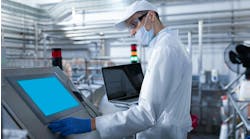How the scarcity of truckers hurts manufacturing (and how to fix the problem)
By David Raun, CEO of One Stop Systems, Inc. (OSS)
According to the American Trucking Associations (ATA), at current trends the driver shortage could surpass 160,000 by 2030. ATA estimates that, in the next decade, the industry will have to recruit nearly a million new drivers into the industry to replace drivers exiting the field due to retirements, driver burn-out, compensation and poor benefits. These are the challenges facing transportation executives in securing a robust driver pool.
However, the challenge of driver shortages does not end with the trucking industry. Rather, the scarcity of drivers directly affects the larger manufacturing sector.
How so?
Consider that disruptions in supply chains due to transportation bottlenecks create negative feedback loops relative to production forecasting, logistics, shipping, transportation costs and business in general.
Also read: The 3 biggest takeaways from the supply chain crisis
Against this backdrop, manufacturing and transportation leaders are searching for solutions, which can streamline operations and control cost structures. One such solution is autonomous trucking delivered through artificial intelligence technology.
Autonomous trucking in action
People are familiar with autonomous cars, yet most individuals are stunned to learn that autonomous trucks are already on the road with hundreds of thousands of miles logged on delivery routes.
There are many advantages to autonomous trucking for the manufacturing sector, with the prime benefit being a substantive reduction in travel times, doubling utilization and load capacity.
A typical coast-to-coast journey for a long-haul delivery trucker is four days. Autonomous trucks can reduce this time by half due to an 11-hour restriction on driving times for traditional truckers in a 24-hour period; autonomous trucks can be on the road for 22 hours and only require time for fueling.
For manufacturers, this time-savings means significantly reduced time-to-market, and greater transparency in their planning and logistics scheduling.
And as delivery times are reduced, companies are reducing their expenses. The bottom line: 2X the productivity equals 2X the profits!
Factors driving autonomous adoption
Several dynamics are in play regarding the increased utilization of autonomous trucking. Leading the list is the sheer market forces of demand. The economics are so strong that trucking companies and manufacturers are interested in Autonomous Driving Levels 4 and 5. Here’s a breakdown:
Level 0 Momentary Driver Assistance
Level 3 Conditional Automation
Another compelling reason for adoption is the ongoing rise of e-commerce, which is forecast to grow rapidly, and could increase from $3.3 trillion in 2022 to $5.4 trillion in 2026, according to Morgan Stanley.
Accelerating e-commerce will directly translate to increased manufacturing, and more trucks on the road to facilitate supply delivery.
And business leaders know this, which is why major companies are heavily investing in this technology—Amazon, UPS, Fed Ex, Walmart, Peterbilt, Freightliner, Daimler and Bridgestone.
Additional benefits to those who are committing to autonomous trucking include improved fuel efficiency and the elimination of safety issues associated with driver fatigue.
Technology & innovation
Ensuring that an autonomous truck operates safely and effectively is a challenging proposition, and requires the power of a data center at the “rugged edge.” This edge computing must function at the highest levels of performance in harsh environments. In the case of a truck, the hardware must survive extreme conditions of vibration, heat and moisture, while processing and storing an enormous volume of data that must be offloaded quickly to the cloud for additional analysis.
Edge-computing hardware has unique power requirements, and must possess the most advanced modular, highest-density, fast-compute and memory capabilities. Trucks were never designed to support a 2,000-watt supercomputer on board, so the challenges are complex.
An autonomous truck is an innovation marvel with sensors, cameras, lidar, and radar as well as compute and storage hardware with enough performance capabilities to replace a human driver. In addition, AI systems provide computation and analysis, and autonomous-software solutions deliver efficiency and reliability.
Autonomous evolution
Autonomous trucking operates at various levels of complexity, relative to the routes it operates. This is a critically important point for manufacturers, as the most common utilization is a vehicle that operates on only highways from one transfer hub to another. This is called hub-to-hub. A second, more complex application involves a dock-to-dock trip, requiring turn capability and city-street navigation. As technology and data-analysis evolve, this full capability will improve and prove extremely valuable to manufacturers from a cost perspective.
In the not-too-distant future, autonomous cars will be the norm; however, autonomous trucks are already here and changing the manufacturing and transportation industries. It is likely you have shared the road with one of these vehicles.



